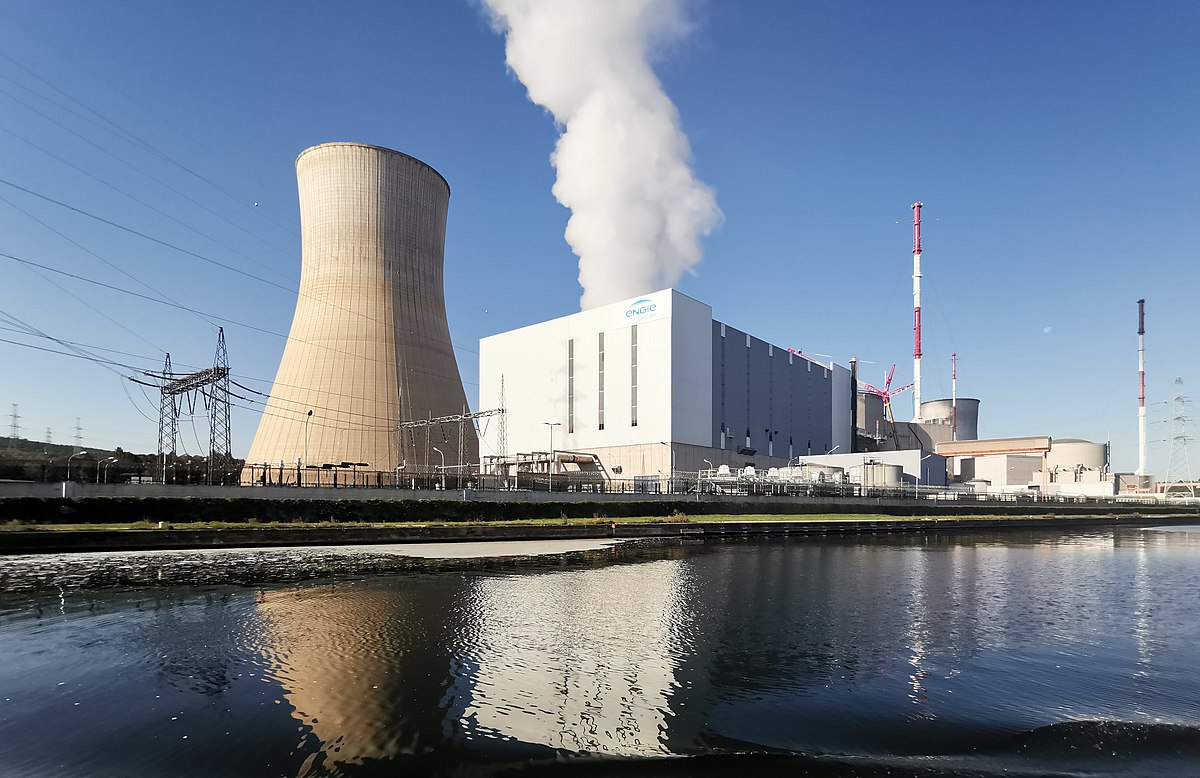The development of Russia’s only new LNG project, Yamal LNG, that is actually happening fueled speculations on the project being a possible threat to Poland’s LNG terminal. However, the Russian operator itself admitted that it was aiming at Asia because it is a fight worth having – writes Wojciech Jakóbik, BiznesAlert.pl’s editor in chief.
Aim:Asia
“In practice the entire LNG volume has been assigned to the Asian market based on long-term and other contracts. The Yamal LNG (official name – ed.) contracted 2.5 million tons of LNG annually with Gas Natural Fenosa,” the press office of Russia’s Novatek informed BiznesAlert.pl.
The Yamal LNG terminal will have a capacity of 16 mtpa. The project’s partners are Russia’s Novatek, China’s CNPC and France’s Total (20 percent each), as well as the Chinese Silk Road Fund. The sole choice of shareholders shows where the deliveries will be directed. The presence of the French company is a remnant of its bold plans to extract gas from the Shtokman deposit, which ultimately failed. The Chinese are joining the game with the shares of the gas company CNPC and money from their own Fund because they are counting on cheap LNG from Russia.
The future of the Chinese LNG market looks promising. LNG imports to the country increased in June by 95 percent year on year. The Chinese bought 3.12 mt. Between January and June the import of liquefied gas increased by 45 percent and reached 19 mt. The majority of deliveries came from Australia and Qatar. Today China is the world’s third LNG importer.
According to a CNPC’s think tank, by 2030 natural gas consumption in China will increase by an average of 8.1 percent in comparison to the average global growth of 2.1 percent. A part of this market could be captured by Russians. According to the International Energy Agency in the next five years China will be responsible for 40 percent of the global increase in natural gas demand. This trend will be bolstered by the promotion of clean energy in the country. LNG will be the most popular means to this end. This is because the perspectives of extracting gas, including shale gas, in China are scant, despite the country being the world’s third leader of unconventional extraction after the US and Canada. The shale gas volume in China is estimated at 764.3 bcm.
China is a more interesting partner than Japan, which is the number one importer, but which also adopted a policy to decrease imports by going back to nuclear energy and developing renewable energy sources. According to the Institute of Energy Economics Japan, LNG import to Japan in the fiscal year of 2017 will decrease by 3.1 percent to 82.1 mt. By the end of the 2018 fiscal year, the drop will be 2.3 percent to 80.3 mt. All of this will happen provided that 10 out of the 19 reactors shut down after the Fukushima disaster will be brought back online before March 2018. However, it is not certain this will happen. The trend’s goal is to foster the slowing GDP growth estimated at 1.4 percent in 2017 and 1.1. in 2018. The demand for gas has remained unchanged by the bold Sakhalin-Hokkaido project, which is still in its design phase.
Aim: business and politics
The implementation of the Yamal LNG project started in 2013 and has encountered many challenges. The first one is the extreme weather conditions in the Arctic where the terminal is to be built. Over 200 holes had to be drilled for posts that would reinforce the construction in permafrost. It was also necessary to solve logistical issues related to the distance between the facility and inhabited settlements. This is why a harbor and an airport were built in Sabetta. It will be used to receive construction equipment and in the future it will facilitate LNG deliveries.
However, still the biggest challenge for the project was constituted by the sanctions introduced against Russia because of the illegal annexation of Crimea and aggression on eastern Ukraine. In July 2014 Leonid Michelson, Novatek’s then CEO, was personally encompassed by the sanctions. And so was his company, which was thus excluded from cooperation with western partners. Despite that France’s Total did not leave the project and its organizers claimed that the sanctions would not impact the schedule.
A fleet of fifteen ice-breaking LNG carriers with a capacity of 170 tcm each was designed to fit the needs of the Yamal LNG project. The first vessel ordered by Sovcomflot reached Sabetta at the end of 2016 from Daewoo’s shipyard in South Korea for USD 320 m. The maiden voyage of the ship named Christophe de Margerie in honor of the late CEO of Total, ended on 30 March when it reached Sabetta after tests. It is an ARC-7 class ship with a capacity of 173.600 cm. It was custom made in order to travel between the Yamal LNG terminal via the Gulf of Ob to the Kara Sea. It can break ice up to 2.1 meters deep and deliver LNG all year long to the west and from July to December to the east. The northern delivery route across the waters that surround Russia in the north allows to shorten the delivery time . from 30 to 15 days. On 16 August Christophe de Margerie successfully completed the route, which is over 4000 km long. However, it took the ship 19, not 15 days. Despite the delay, the travel time was shorter by about 30% than the route across the Suez Channel.
The expansion of deliveries via the Northern Route is of political significance for Russia. In a letter to the Arctic Council from 30 August 2017, President Vladimir Putin said that a sustainable security architecture in the Arctic could overcome divisions and include the interests of all parties interested in exploiting the area. In this context he mentioned the Yamal LNG project as a symbol of successful multilateral cooperation. In his opinion the approach presented in the project could help to start a constructive dialogue on the future of the Arctic.
The region is important not only because of its oil and gas deposits, which could constitute up to several dozen percent of the world’s reserves. Russians need them to gradually replenish their old, depleting deposits and sustain the level of extraction and the budget income. However, the Arctic is also important for military strategy. Russian military bases are deployed along the Arctic Circle. In order to manage this potential, Russians created the Arctic Joint Strategic Command in 2014. In 2015 they conducted military exercises in the Arctic using equipment designed specifically to operate in the local weather conditions.
Therefore, the future of the project will have economic and political significance for Russia’s pursuits in Asia and the Arctic. It is a shining star on Russia’s otherwise overcast sky of other export projects. The expansion of the LNG terminal on the Island of Sakhalin (Sakhalin 2, Gazprom with Shell, Mitsui, Mitsubishi, 10.5-15 mtpa) thanks to the Yuzhno–Kirinskoye cannot continue because the cooperation with Shell has been blocked by US sanctions introduced against the project. The construction of the terminal in Sakhalin (Far East LNG – Rosneft, Exxon Mobil, 5 mtpa) is currently on hold because of a number of reasons. Firstly, there is an ongoing dispute over the access to the island’s gas pipelines owned by the Sakhalin Energy operator that belongs to Gazprom. The other reason are the US sanctions against Rosneft, which make the cooperation with Exxon Mobil impossible. The third reason is the fact that the profitability of LNG export projects is dropping in the face of the increasing oversupply. Similar issues plague the Vladivostok LNG project (Gazprom, 10 mtpa), which according to Gazprom was not a priority.
The development of Russia’s LNG export in Asia will impact the future of gas pipeline projects with China. Gazprom wants to start pumping gas through the Power of Siberia gas pipeline (up to 38 bcm annually) on 20 December 2019. The company claims it will meet this deadline. This is despite the fact that it remains unclear whether the parties reached a final agreement on sharing the construction costs and settling the gas price. Since the project is volatile, it is too early to analyze the potential of the memorandum on the Power of Siberia 2 gas pipeline signed between Gazprom and CNPC. The pipe would transport up to 30 bcm of gas to China annually and would tap into the raw materials base that is currently on offer to Europe. If Russians do develop their LNG export capabilities, the future of the pipelines to China will be uncertain. Still, the future of the liquefied gas sector is important for Russia because of the reasons already mentioned: economy and politics.
Aim: cooperation with Gazprom
However, the Polish media are eager to write that since the only LNG project with a future is Novatek’s Yamal LNG, it means inevitable competition with the former monopolist with which the company is fighting on the internal market. The liberalization of LNG exports allows to sell liquefied gas abroad to other companies than Gazprom, which can exclusively export piped gas.
However, this thesis is not sustainable. It should be remembered that the raw materials base for the Yamal LNG project belongs to the company from Petersburg. This is the South–Tambeyskoye gas field near the port in Sabetta. In 2012 Novatek and Gazprom signed a memorandum on establishing a joint venture (Gazprom – 75 percent and Novatek – 25 percent of the shares) that would exploit the Tambeyskoye deposits for Yamal LNG. The assumed extraction potential of the field would allow to export up to 20 mt of LNG per year. The company was also supposed to extract gas in the Gydan Penninsula where the Shtokman field is located, which in the end was abandoned because it was unprofitable. Gazprom and Novatek partnered for the Yamal LNG project, which means the gas of the same company, which transmits the raw material to Poland via the Yamal gas pipeline, will reach the liquefied gas consumers from Yamal.
Conclusions for Poland
From the Polish point of view the Yamal LNG terminal will be of little strategic significance. It is important for the discussion on the Arctic and Russia’s pivot towards Asia. However, Poles cannot hope that Gazprom will compete against Novatek. On the contrary, they should buckle up for a more refined strategy pursued by Russia, which will use their cooperation, and may even pursue a game where they will pretend to be rivals. Still, one should expect that canards about the war between two companies that are under total Kremlin control will quickly become reality. This idea comes back periodically just like the news on Gazprom’s impending detronization as a leading gas exporter thanks to gas pipelines. This idea has never even entered the implementation phase. If the Kremlin is not planning any surprises, the state of play on this front will not change.








